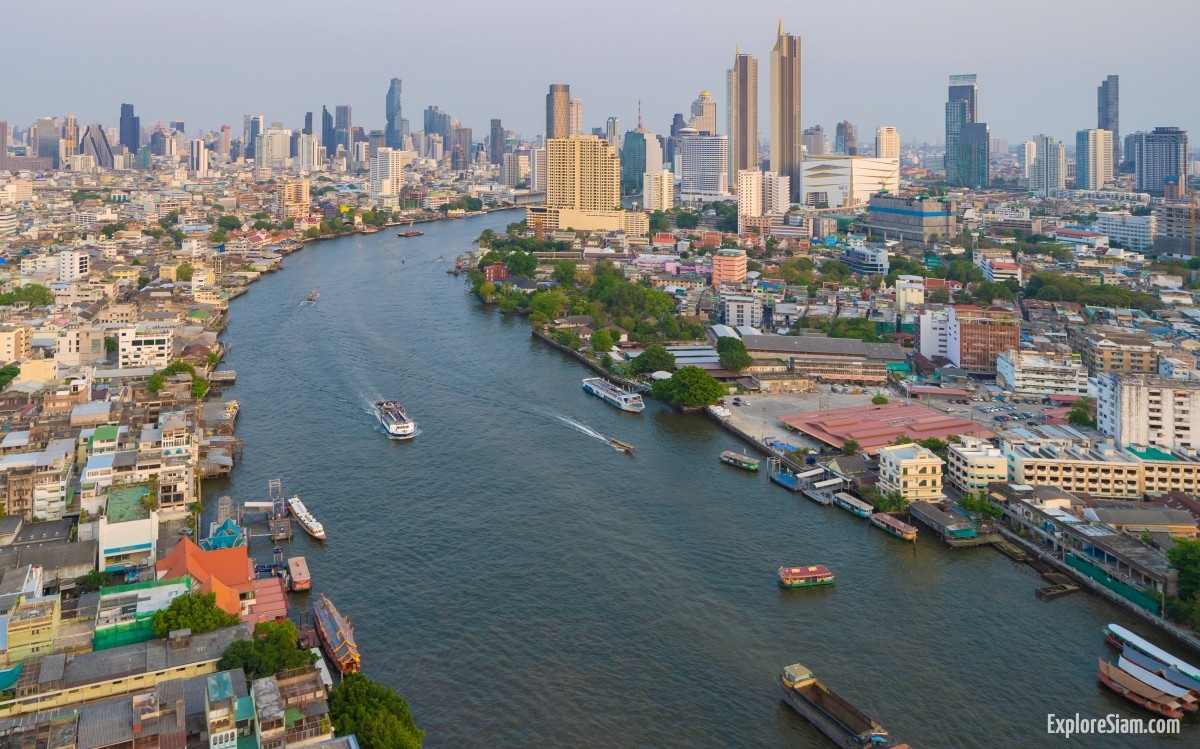The Chao Phraya River, often referred to as the “River of Kings”, is a vital artery that has shaped the history, culture, and daily life of Bangkok and Thailand. Stretching over 372 kilometers, it flows from the confluence of the Ping and Nan rivers in the northern part of the country, winding its way through the Central Plains and ultimately emptying into the Gulf of Thailand. This majestic river is not only a key transportation route but also a cultural and historical landmark, providing sustenance and inspiration to millions.
Historical Significance
The Chao Phraya River has been central to Thailand’s history for centuries. The river basin has been a fertile ground for human settlement since ancient times, with evidence of communities dating back to the prehistoric period. As the heart of the Ayutthaya Kingdom from 1351 to 1767, the river facilitated trade and communication with other parts of the world, contributing to the kingdom’s prosperity. The strategic location of Ayutthaya, surrounded by three rivers, made it a formidable trading hub and the wealthiest city in Southeast Asia during its peak.
When King Rama I established Bangkok as the capital in 1782, he chose a site along the Chao Phraya River, recognizing its strategic and economic importance. The river provided natural defenses and a means of transport that was crucial for the new capital’s growth and development. Many of Bangkok’s iconic landmarks, including the Grand Palace and Wat Arun, were built along its banks, cementing the river’s role in the city’s architectural and cultural heritage.
The River’s Role in Modern Bangkok
Today, the Chao Phraya River remains an essential part of Bangkok’s identity and daily life. The river is a bustling waterway, with an array of vessels ranging from traditional long-tail boats and ferries to modern cruise ships and cargo barges. It serves as a major transportation route, helping to alleviate some of the city’s notorious traffic congestion. Commuters and tourists alike use the Chao Phraya Express Boat service to navigate the city’s attractions and business districts, offering a scenic and efficient alternative to road travel.
Cultural and Tourist Attractions
The banks of the Chao Phraya River are lined with cultural and historical landmarks that attract millions of visitors each year. Some of the must-see attractions include:
- The Grand Palace: This opulent complex, once the residence of Thai kings, is a masterpiece of traditional Thai architecture. The palace grounds house the revered Wat Phra Kaew (Temple of the Emerald Buddha), one of the most sacred Buddhist temples in Thailand.
- Wat Arun (Temple of Dawn): This striking temple is known for its towering spires (prangs) and intricate porcelain decorations. Located on the Thonburi side of the river, Wat Arun offers breathtaking views, especially at sunrise and sunset.
- Wat Pho: Home to the famous Reclining Buddha, Wat Pho is one of Bangkok’s oldest and largest temples. It is also renowned for its traditional Thai massage school, where visitors can experience authentic Thai massage.
- Asiatique The Riverfront: A modern open-air mall and night market, Asiatique combines shopping, dining, and entertainment along the river. With its vibrant atmosphere and diverse offerings, it has become a popular destination for both locals and tourists.
- IconSiam: This luxury shopping complex and lifestyle destination boasts high-end stores, gourmet restaurants, and a stunning riverside promenade. IconSiam also features a heritage museum and cultural performances, showcasing Thailand’s rich history and traditions.
River Cruises and Dining
One of the best ways to experience the Chao Phraya River is by taking a river cruise. Numerous operators offer a range of options, from simple boat tours to luxurious dinner cruises. These cruises provide a unique perspective of Bangkok’s skyline, illuminated by the shimmering lights of the city’s landmarks.
Dining along the river is also a memorable experience. Many restaurants offer stunning views of the river, allowing diners to enjoy delicious Thai cuisine while watching the boats go by. Riverside dining venues vary from upscale establishments to casual eateries, catering to all tastes and budgets.
Environmental Concerns and Conservation
Despite its beauty and significance, the Chao Phraya River faces environmental challenges. Pollution from industrial discharge, untreated sewage, and plastic waste has adversely affected the river’s ecosystem. Efforts are being made to address these issues, with government initiatives and non-profit organizations working to clean up the river and promote sustainable practices.
Public awareness campaigns aim to educate residents and visitors about the importance of keeping the river clean. Community-led projects, such as riverbank clean-ups and waste management programs, are also playing a crucial role in preserving the Chao Phraya for future generations.
The Chao Phraya River is much more than a waterway; it is the lifeblood of Bangkok and a symbol of Thailand’s rich heritage. From its historical significance and cultural landmarks to its role in modern transportation and tourism, the river continues to be an integral part of Thai life. As efforts to protect and preserve the Chao Phraya gain momentum, it remains a vital resource and a source of inspiration for all who encounter its majestic flow.





